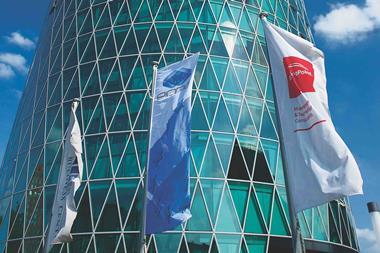Sanofi European Pension Fund has become the first Belgium-based pension fund to begin operating cross-border activity in Germany, with two Hoechst companies coming on board.
The development means that the liabilities associated with more than 5,000 pensioners of Hoechst GmbH and Hoechst Trevira GmbH are being funded via Sanofi European Pension Fund.
Hoechst AG was one of the three largest chemical and pharmaceutical companies in Germany before merging with Rhône-Poulenc in 1999 to form Aventis, which was subsequently taken over by Sanofi.
Sanofi European Pension Fund’s assets under management have jumped by more than €650m as a result of the addition of the German section, which is legally ring-fenced from the section for the other countries – Ireland and Switzerland – in which the pension fund operates cross-border activity.
Of 15 cross-border pension funds authorised by the Belgian regulator, FSMA, Sanofi’s is the first to start running a German section. J&J Pension Fund has completed the notification procedure with FSMA for cross-border activity in Germany, but IPE has confirmed that it has not started activity in the country.
‘Will open doors’
Thierry Verkest, partner at Aon in Brussels, said adding a Germany section is a significant development for cross-border pension funds.
“After France was added to the Belgian ExxonMobil pension fund two years ago we’ve been waiting for liabilities from another large country to move into a cross-border pension fund,” he told IPE.
“This will open doors for other multinational corporations.”
Not all German companies will be able to outsource pension liabilities locally or to a cross-border pension fund, said Verkest, as funding liabilities requires an upfront injection of cash.

He said German pensioners benefitted if the liabilities associated with their pensions were transferred to a pension fund in Belgium. This was because there are dedicated assets, secured in a separate section, and because of the flexible funding regime in place in Belgium.
There are several ways in which employers in Germany can organise workplace pension provision, with the most common form being Direktzusage, or book reserve schemes.
The pension liabilities do not have to be funded, and often are not. The employer has to build up “book reserves” in respect of the liabilities on the company balance sheet, using generally accepted accounting standards.
Despite hopes and intentions to the contrary, an EU cross-border pension fund market has yet to take off. EIOPA last reported on cross-border market developments in early 2018, saying the number of cross-border IORPs had initially grown, albeit at a slow pace, when the IORP Directive became applicable in 2005 and had stalled since 2010.
As at the end of December 2016, there were 73 active cross-border IORPs, out of 83 that had completed the notification procedure. A spokeswoman for EIOPA referred to these as pre-Brexit figures and said post-Brexit data would be released by the end of the fourth quarter this year.
One of the main goals of the IORP II Directive is to remove obstacles to occupational pension funds operating across borders in Europe.
At a PensionsEurope conference earlier this year, Fausto Parente, executive director of EIOPA, said the supervisor had been hoping to see an increase in cross-border activity after the IORP II Directive was implemented, adding that it was perhaps ”premature to make a full analysis because […] in some countries the implementation came quite late”.
Aon’s Verkest said existing cross-border plans were working “perfectly well”.









No comments yet